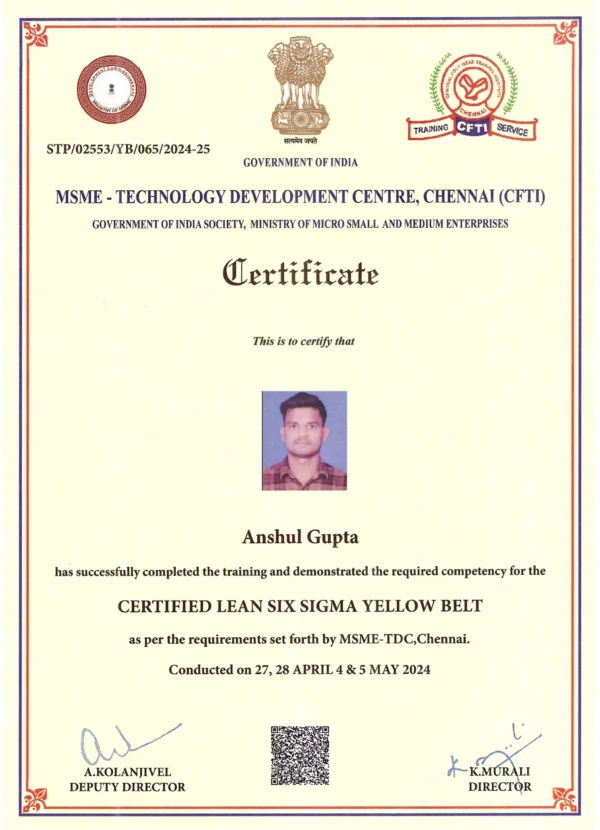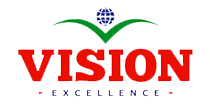Course Description
T
The Yellow Belt Body of Knowledge introduces the foundations of Lean Six Sigma, focusing on practical tools and structured methodologies to support problem-solving and quality improvement projects. It prepares learners to actively contribute to improvement initiatives while building confidence to apply Six Sigma concepts in their work environment.
This module provides an introduction to Six Sigma foundations and principles, explaining the DMAIC methodology and its impact on organizational quality. Learners also explore Lean foundations and waste elimination techniques such as Just-in-Time (JIT), 5S, and Value Stream Mapping (VSM). Roles and responsibilities within Six Sigma projects, including belts, champions, and sponsors, are outlined. Common quality tools like the Pareto chart, fishbone diagram, check sheet, and histogram are introduced as essential instruments for analysis and problem-solving.
The Define Phase emphasizes project identification and the importance of aligning with customer needs. Voice of the Customer (VOC) and Critical to Quality (CTQ) elements are explored in detail, guiding the selection of suitable Six Sigma projects. Learners develop stakeholder analysis skills and apply SIPOC mapping to visualize suppliers, inputs, processes, outputs, and customers, ensuring clarity at the start of improvement efforts.
This phase introduces learners to basic statistics such as mean, median, standard deviation, and variance, which form the foundation for data-driven decision-making. Techniques for effective data collection, including planning, frequency, and approaches, are emphasized. The differences between qualitative and quantitative data are explained, followed by an introduction to Measurement System Analysis (MSA) and Gauge Repeatability & Reproducibility (GR&R) to ensure data reliability.
In the Analyze Phase, learners apply Lean tools such as 5S and value analysis to evaluate processes. Failure Modes and Effects Analysis (FMEA) is introduced to assess risks by examining severity, occurrence, and detection. Root cause identification techniques like the 5 Whys, fishbone diagrams, and matrix analysis are practiced. Learners also explore regression, correlation, and the fundamentals of hypothesis testing to validate assumptions and uncover improvement opportunities.
The final module covers improvement and control practices, beginning with Kaizen and the Plan-Do-Check-Act (PDCA) cycle as frameworks for continuous improvement. Cost-benefit analysis is introduced to evaluate project feasibility and outcomes. Learners study control plans and control charts as sustainability tools, while documentation practices ensure clarity, communication, and long-term adoption of solutions.






